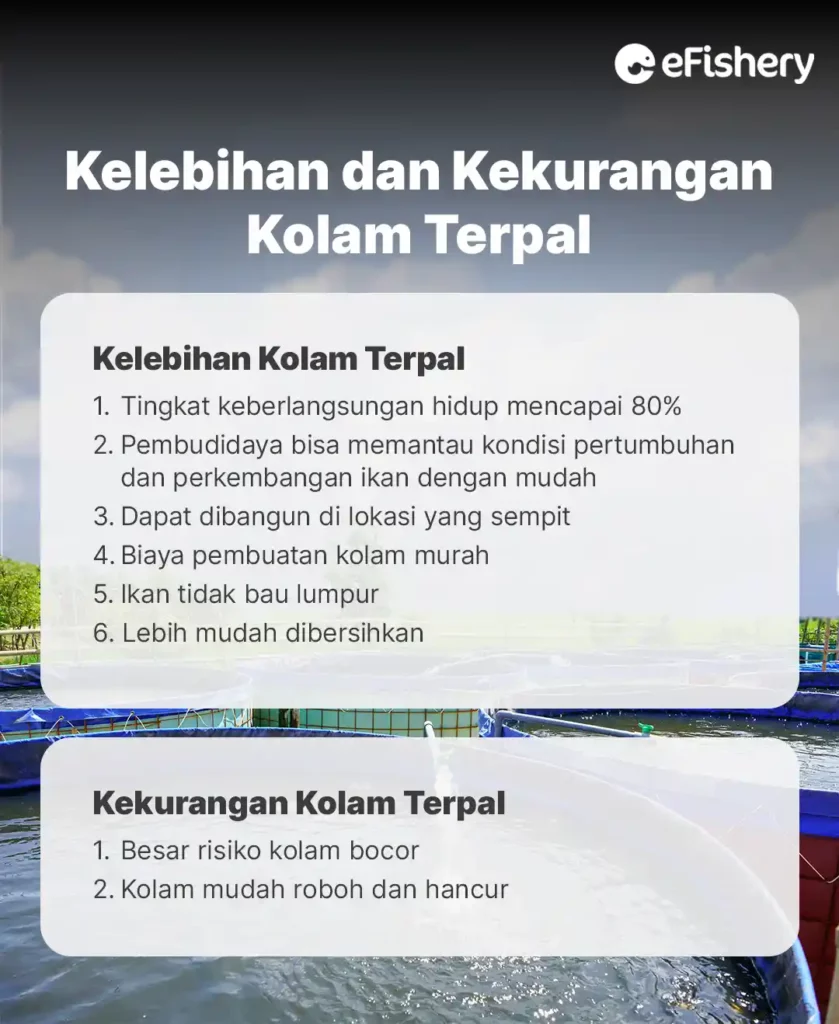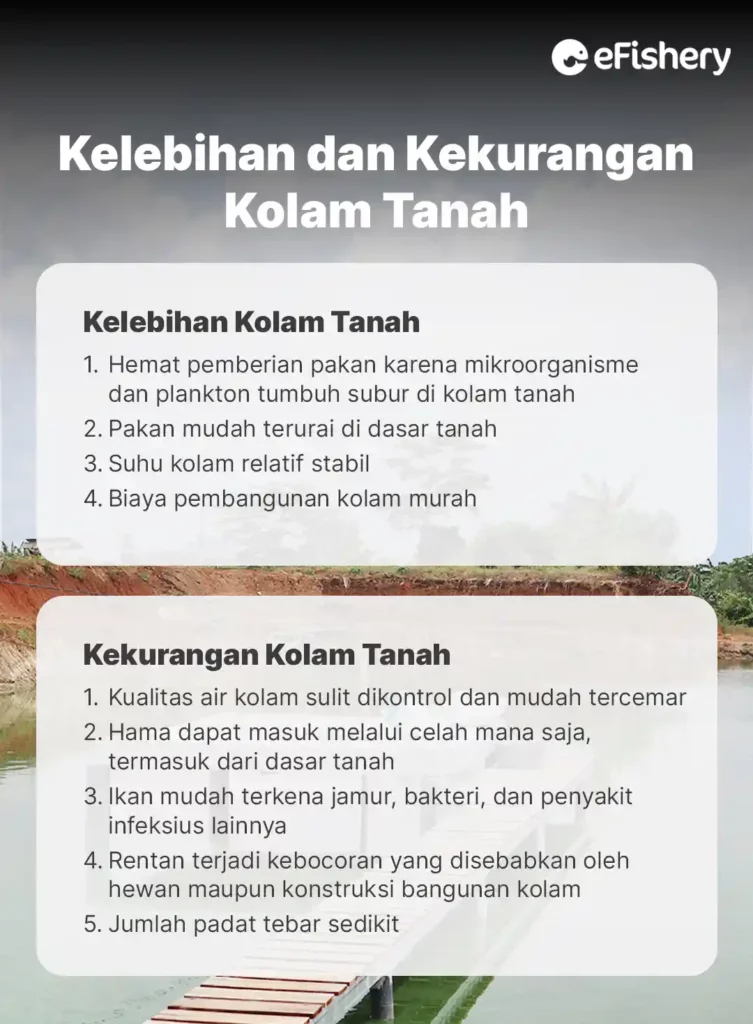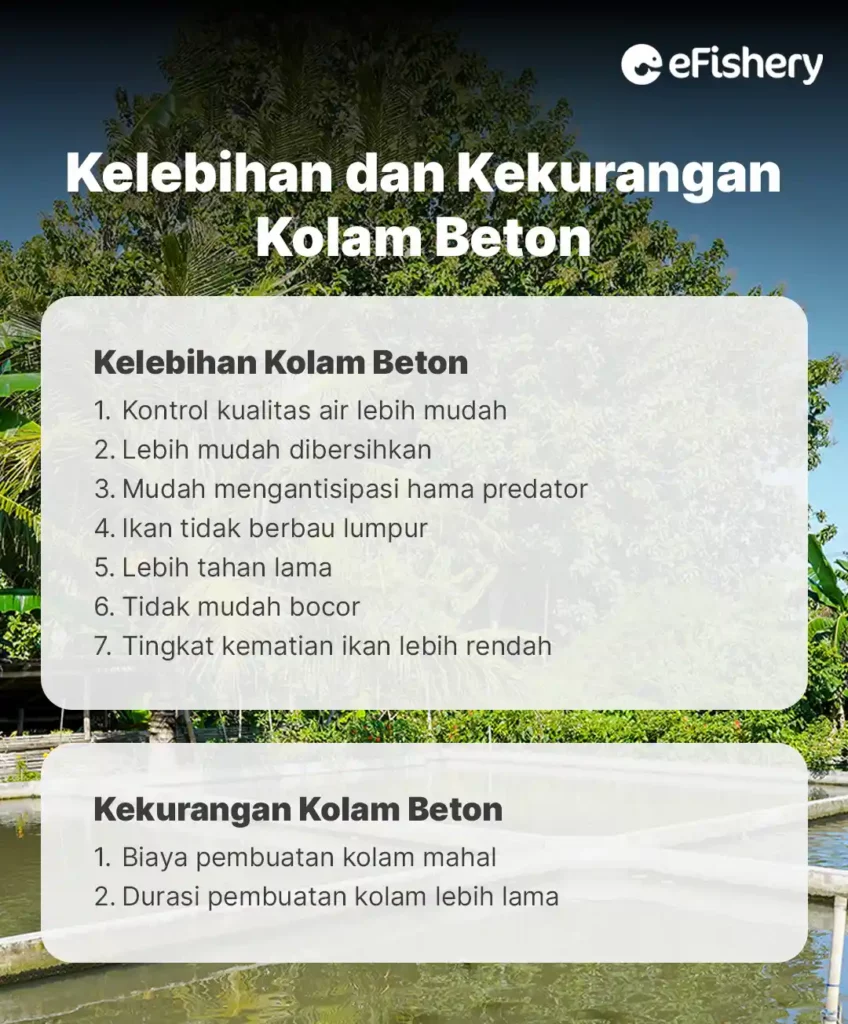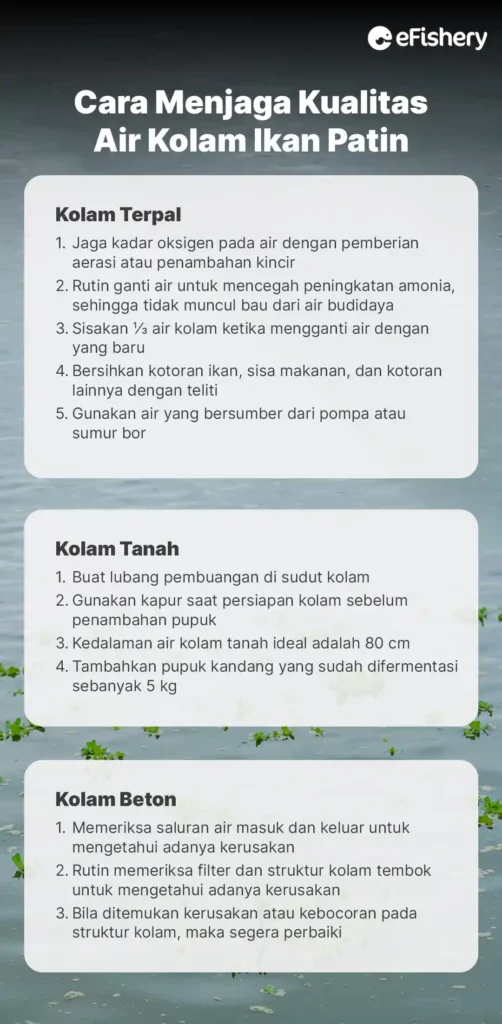business order catfish farming To be successful, one of the main factors that need to be considered is the catfish pond and the quality of the pond water. If the catfish pond is not in good condition, there will be many problems in your catfish farming business. Just like the selection of feed, seeds and catfish broodstock, pond water quality is a crucial factor that can directly affect the condition of catfish during the cultivation period before being harvested.
As a cultivator, you need to know the type and size of catfish ponds that are suitable for cultivating catfish. For example, the size of a pond for 500 catfish will be different from the size of a 1000 catfish pond. Complete details about the size, type, and how to maintain catfish pond water quality will be discussed in this article. Let's listen!
Types of Catfish Ponds
Aquaculture ponds are a new habitat for catfish to grow and reproduce until they are of mature weight and age for harvesting or spawning. In order for catfish to grow comfortably, cultivators need to build aquaculture ponds according to the right water quality standards and parameters, such as water pH levels, dissolved oxygen levels, and pool water temperature.
Even so, the cultivator must first decide which type of catfish pond to build and use as a cultivation pond. There are three types of catfish ponds to choose from, namely tarpaulin ponds, earthen ponds and concrete ponds. The following is a detailed explanation for each type of pool.
1. Tarpaulin Pool
This type of tarpaulin pond is the most economical pond because the cost required to build a cultivation pond is quite cheap. This type of pond is suitable for novice cultivators who have minimal capital and small land, because this type of tarpaulin pond does not take up too much space. However, there are some drawbacks to tarpaulin ponds that need to be considered.
The following table shows the advantages and disadvantages of tarpaulin ponds for aquaculture ponds.

2. Ground Pool
The most prominent advantage of earthen ponds is that they resemble the natural habitat of fish so that fish will easily adapt to the new environment.
To build an earthen pond, you need to ensure that the quality of the soil to be used is of the best quality. It is recommended to make earthen ponds using clay or sandy loam soil which is not too porous so that it can hold large volumes of water mass and minimize the potential for leaks on the walls of the pool.
Meanwhile, one of the disadvantages of earthen ponds is the quality of the water which is easily mixed with bacteria and pests from behind the soil. With polluted water quality, catfish growth can be hampered. Therefore, before building an earthen pond, you should first find out how to anticipate or deal with the quality of polluted ground pool water.
Specifically, the following table shows the advantages and disadvantages of earthen ponds.

3. Concrete Pool
Concrete ponds are the best type of catfish pond compared to the other two types because concrete ponds are far more durable and not easily damaged. Designing and installing drains in concrete ponds is also easier so that you can control the quality of the pool water, for example when you want to control the pH quality of the water so that it is maintained at a value of 7-9.
Nevertheless, you need to prepare a large enough capital to build a concrete pond. Apart from that, you also need a longer time and a slightly larger area to build a concrete pond.
The following table shows the advantages and disadvantages of concrete pools.

Size of the Catfish Pond
The size, type of pond, and cultivation system used are determining factors for the amount of stocking density, because if the density of fish exceeds the carrying capacity of the pond or does not comply with system standards, the fish being cultivated will be more easily stressed.
One example is when you use an earthen pond but spread catfish seeds densely spread over a concrete pond. This will increase the likelihood of stress conditions in the farmed fish.
Ponds that have a smaller size with a large number of stocking densities can have an impact on the psychological condition of the fish. If the psychological condition of the fish is disturbed, the fish will be easily stressed, so that the growth and development of the catfish is also affected.
If you continue to force a number of catfish to be stocked in one pond with sizes that do not comply with the standards, the impact that will occur is crop failure. The catfish will have difficulty moving and will not be able to get oxygen. The health condition of the fish will worsen and not only inhibit the growth of the catfish, but has the potential to cause death.
However, building a pond with a larger size than the number of catfish stocked is also not quite right. From a business perspective, the number of fish that is smaller than the size of the catfish pond is actually inefficient for the development of the aquaculture business.
The average standard stocking density for one catfish pond is 1 m in volume3 is 25 catfish. In other words, the standard stocking density for catfish culture ponds is 25 individuals/m3. However, the stocking density volume of catfish is classified into three systems, namely:
- Extensive systems with earthen ponds usually have a stocking density of 8-15 fish/m3.
- Semi-intensive systems usually have a stocking density of 27-33 fish/m23.
- Intensive systems with fast water culture media usually have a stocking density of 84 fish/m3.
Case in point, if you build a pond measuring 100 m3, the pond will be suitable to accommodate a total of 2,500 catfish. The size of the catfish pond for 500 fish is 20 m3, while the ideal size of a 1000 catfish pond is 40 m3. Keep in mind, the ideal catfish pond depth is 1.5-2 m.
How to Maintain Water Quality in Catfish Ponds
When making cultivation media, you need to consider making drains that are useful when you are draining pond water and removing residual sediment, such as leftover feed and fish waste. Then, you also need to learn how to implement catfish pond water management.
There are specific requirements or parameters for the quality of aquaculture pond water that regulate oxygen levels in the water, pond temperature, water pH, and the level of turbidity in pond water. Specifically, the following is pond water quality management and procedures for cleaning aquaculture ponds.
The following are the rules and conditions for good water quality for catfish farming:
- The pool water temperature is between 22-33 °C
- Dissolved oxygen levels are around 3-7 ppm, with optimal levels of 5-6 ppm
- Carbon monoxide levels less than 10 ppm
- Ammonia (NH3) and less than 0.1 ppm sulfuric acid
- The pH value of water is between 6.5-9 and the maximum number is at 7-8.5
Meanwhile, specific rules for maintaining water quality for catfish ponds based on the type of pond can be seen in the table below.

Kembangkan Bisnis Budidaya Ikan Patin Pakai Kabayan dari eFishery
Mengembangkan bisnis budidaya ikan patin bisa Bapak/Ibu lakukan dengan menggunakan Kabayan (Love, Pay Later) yang menyediakan akses ke institusi finansial terpercaya serta diawasi/berizin OJK untuk membeli pakan. Bapak/Ibu bisa mendapatkan pakan berkualitas dengan sistem pembayaran tempo yang dapat dibayarkan setelah panen. Dengan proses cepat dan persyaratan mudah, budidaya ikan pun makin lancar pakai Kabayan.
Isi formulir di bawah ini untuk mendapatkan akses ke Kabayan!
Get Access to Financial Institutions that are Trusted, Registered & Supervised by OJK!
Fill in your personal data in the following form. Our team will immediately contact you via the number cellphone attached. Make sure the data entered is correct.
Questions About Catfish Ponds
The standard stocking density for one catfish pond is 1 m in volume3 is 25 catfish, depending on the type of pond used. The size of the catfish pond for 500 fish is 20 m3, while the ideal size of a 1000 catfish pond is 40 m3.
The way to maintain the quality of catfish pond water is to build aqueducts to drain the pond water and remove residual feed deposits and dirt. In addition, maintaining the quality of catfish pond water is carried out by maintaining water quality parameters such as dissolved oxygen levels, water temperature, pH, and the level of turbidity in pond water.
- https://gdmorganic.com/cara-menjaga-kualitas-air-kolam-patin/#1_Manajemen_Kualitas_Air_Kolam_Terpal_Ikan_Patin
- https://kolamterpal.net/ukuran-kolam-budidaya-ikan-patin/
- https://gdm.id/kolam-ikan-patin/#Jaga_Kualitas_Air_Kolam_Ikan_Patin
- https://dkpp.bulelengkab.go.id/informasi/detail/artikel/budidaya-ikan-patin-dengan-kolam-tembok-beton-awet-dan-tahan-lama-25
- https://www.infoikan.com/2018/07/cara-budidaya-ikan-patin.html
